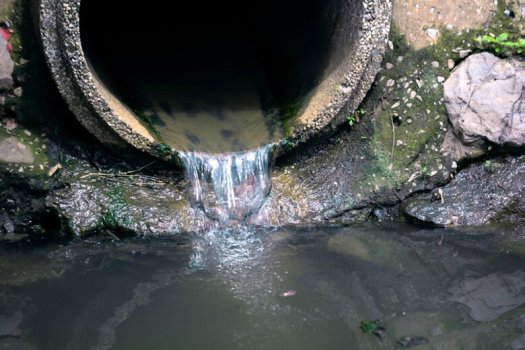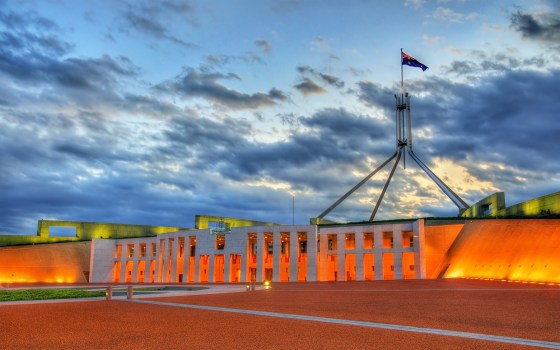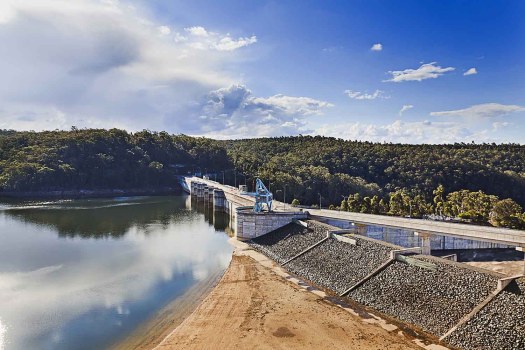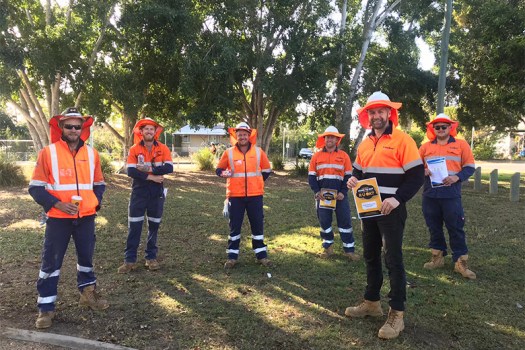
With an estimated 2.4 million street lamp lights in service across Australia, there’s lots at stake when a city, town or council area considers how it should best provide public illumination. While the lights themselves prompt another debate about usage, energy efficiency and carbon emissions, the first port of call is the light pole itself.
Urban streetscapes are increasingly dominated by light poles, even more so given the once humble structures are now capable of housing everything from traffic lights to CCTV cameras and a range of other applications as well as heavy flags and banners. Multifunction ‘smart poles’ must be capable of adapting to new technologies or risk being redundant within a few short years.
Traditionally, the bulk of light poles in Australia were manufactured in steel, its strength and durability winning out when a light was more or less just a light. These days, the light posts are shifting to aluminium – and with very good reason.
Initially seen as less cost-effective than steel, aluminium smelting and extruding technologies have now advanced to the point where extrusions are substantially cheaper. It now makes aluminium’s base price very competitive with steel.
From extraction onwards, pricing becomes a no-contest with aluminium poles proving highly cost-effective over the longer term. At around a third of the weight of steel, transport and installation costs of aluminium are far cheaper; ongoing maintenance is less given the corrosion resistance of aluminium and its self-anodising capabilities; and, given it doesn’t rust, there’s no need for aluminium poles to be regularly structurally tested like their steel counterparts.
Price doesn’t mean a compromise on quality either. While steel’s strength may be quite literally its strength, the quality of Marine Grade Series structural aluminium ensures the latter is now just as durable.
Urban Aluminium offers the market a range of cutting-edge aluminium pole products with whole-of-life costs and environmental benefits very much front and centre of our approach. Considering the total expense from production to disposal, we consider the aluminium option the smartest choice.
This is certainly backed up from a sustainability viewpoint given aluminium’s carbon footprint is much less than steel. With the weight differences between the two products, the impact on transport emissions alone is considerable. The use of recycled aluminium where only 5 per cent of initial energy consumed is required to recycle makes the process economical and environmentally friendly.
Capral Aluminium, Australia’s largest supplier and distributor of aluminium products, notes that recycling one tonne of aluminium saves five tonnes of Bauxite and 15,000-kilowatt hours of electricity. In addition, many of the world’s leading aluminium producers manufacture and operate on a carbon-neutral basis.
The “cradle-to-cradle” certification system takes into account materials health, re-utilisation, use of renewable energy in production, careful use of water and social fairness. In summary, aluminium works well in a circular economy. With an estimated 60 per cent of all new lamp posts in the EU now aluminium and the US market also growing substantially each year, it’s apparent aluminium light poles work as well.
Then there are the safety benefits. The ductile nature of aluminium as a material gives it energy-absorbing characteristics. That’s vital for a structure that is usually found beside roads and close to vehicles. Its ability to slow down the deacceleration of a vehicle significantly reduces G-Forces for vehicle occupants while also reducing damage to the vehicle and the risk of secondary accidents.
For all that, there need be no compromise on design and look when it comes to aluminium poles. The more malleable nature of the product allows it to be shaped far more widely than steel. Extruded aluminium products arguably also offer a cleaner and more architectural aesthetic than a galvanised steel pole with no welded seams and more options for decorative finishes. There’s a range of finishes available from mill to anodising (clear and coloured) to powder coatings and painted.
To discover more about Urban Aluminium’s Smart Poles and decorative aluminium poles please visit www.urban-al.com.au
Comment below to have your say on this story.
If you have a news story or tip-off, get in touch at editorial@governmentnews.com.au.
Sign up to the Government News newsletter






J Knight on: Mannoun re-elected Liverpool mayor amid corruption inquiry
J Knight on: Qld boasts largest publicly owned wind farm
Flying Penguin on: Victoria perceived as a corrupt state